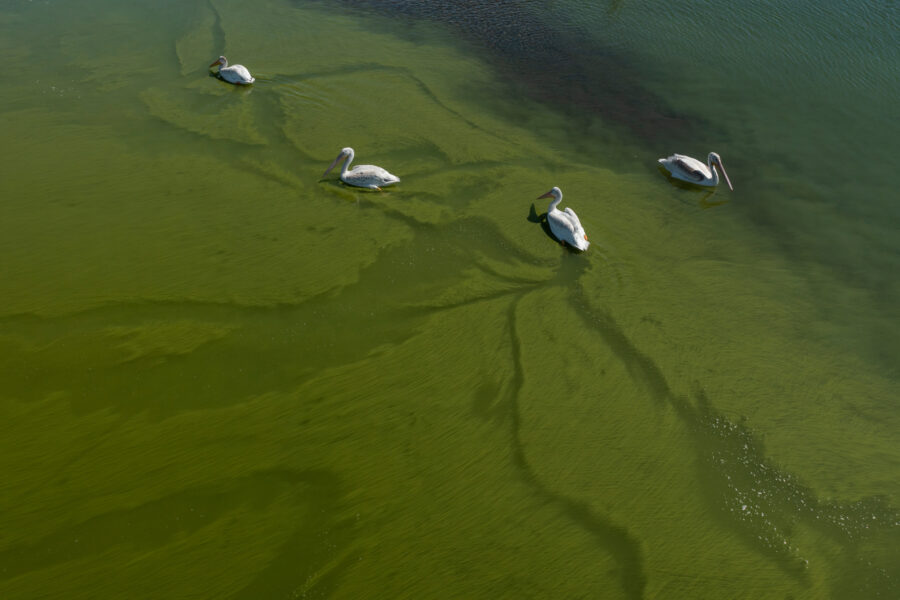EPA Urges US Army to Test for PFAS in Creeks Flowing Out of Former Seneca Army Depot
This article previously appeared in WaterFront.
ROMULUS, N.Y.—The Environmental Protection Agency has formally asked the U.S. Army to sample surface water and sediment in Kendaia and Reeder creeks for PFAS chemicals that may have migrated from the former Seneca Army Depot into Seneca Lake.
“Thus far the Army has not agreed with our request,” the agency’s website reported on June 20.
The EPA said it urged the Army to test samples from sites where the two creeks “originate on the former depot, and where they exit the depot at its boundary to determine whether Army activities at the depot may have impacted the two creeks and are potential pathways of PFAS to Seneca Lake.”
We’re hiring!
Please take a look at the new openings in our newsroom.
See jobsAsked about the EPA website posting, James D’Ambrosio, a spokesman for the U.S. Army Corps of Engineers (USACE), said in a statement Tuesday: “After consultation with (the EPA), they agreed to remove this language from their website.”
The USACE statement also characterized Kendaia and Reeder creeks as “off-base receptors,” as if they did not both originate within the former depot: “If, during our site investigation, sampling values for PFAS show migration off-base towards these creeks, the Army Corps will take samples. Our site investigation focuses on areas of potential concern … on the former base. If migration of PFAS is seen leaving the base, then sampling at off-base receptors (including these creeks) will take place.”
As of noon Thursday, the EPA had not changed the language on its website, as the Army had requested. In a followup email, D’Ambrosio said that “the EPA did not provide a time frame for changing/removing the language. You can reach out to them if you need that additional detail.”
The Army operated the 10,587-acre depot near Romulus in Seneca County, about 200 miles west of Albany, from 1941 to 2000, when it was decommissioned.
For many years, firefighting foam made with PFAS chemicals was used in training exercises at depot sites known as SEAD 25 and SEAD 26. Tests in 2017 showed that surface water and sediment around SEAD 25 were highly contaminated with PFAS (per- and poly-fluorinated) compounds.
Exposure to even tiny traces of PFAS—a class of thousands of man-made chemicals used in making many common non-stick and water-repellent products—can harm the human body’s immune and endocrine systems and raise risks of certain cancers.
The EPA and the Army were alerted last October to the likelihood that Kendaia Creek was a pathway for PFAS to travel from the former base to Seneca Lake when the state Department of Environmental Conservation shared results of tests of fish taken from that creek.

The DEC had collected its data in 2019 from a site near where the creek enters Seneca Lake—outside the boundary of the former depot. “PFAS levels in the (Kendaia Creek) fish were elevated,” the EPA said of the DEC test results.
Although the DEC had collected its Kendaia samples in 2019, it did not issue a report on its findings until Sept. 28, 2023.
The DEC tests of 20 creek chub and blacknose dace showed levels of PFOS, a common PFAS variant that tends to accumulate in fish, ranging from 81,000 parts per trillion to 374,000 ppt.
Denise Trabbic-Pointer, a PFAS expert who worked for decades as chemical engineer for DuPont and now advises the Sierra Club in Michigan, said the evidence from those 2019 DEC tests indicated significant contamination.
“The fish in Seneca Lake are highly impacted by PFAS, in part, from the contribution from the Army Depot,” she said. Kendaia Creek “is getting the worst of it because it’s at the source. (PFOS) is diluted in the lake, but it will continue to bioaccumulate in the (lake fish) unless they clean up the ongoing leaching from the Army Depot to the creek.”
The levels the DEC found in its Kendaia tests are thousands of times higher than the EPA’s maximum contaminant limit for PFOS in drinking water.
In April, the agency set an enforceable maximum contaminant level (MCL) at 4 ppt, and water systems must remediate when contamination exceeds that limit.
In recent years, as evidence of the dangers of PFOS to human health has mounted, state and federal regulators have been steadily lowering regulatory limits. In 2020, New York State had set its enforceable limit for PFOS in drinking water at 10 ppt.
Fish from Seneca Lake have been found to be contaminated with PFOS at levels more than 1,000 times that high.
When DEC tested 10 yellow perch caught in Seneca Lake in 2020, one had PFOS of 34,700 ppt. Four of the lake trout from Seneca Lake had PFOS levels above 15,000 ppt.
Last year tests by the State University of New York’s College of Environmental Science and Forestry tended to confirm those high readings. It found lake trout from Seneca Lake had average PFOS levels of 11,800 ppt, and one registered 44,000 ppt.
The state Department of Health stands by its 2019 advice that most people can eat four meals a month of a fish as long as its PFOS concentration is less than 50,000 ppt. The agency’s “Do Not Eat” warning is not triggered until PFOS levels hit 200,000 ppt.
The DOH has dismissed public concerns about the agency’s widely divergent stances on drinking PFOS-contaminated tap water and eating PFOS-contaminated fish.
In a statement in May, the DOH said: “Comparing regulatory drinking water maximum contaminant levels to fish consumption guidelines is an apples-to-oranges comparison as the average intake of drinking water for an adult is close to 100 times more than that of fish—even at weekly fish consumption.
“Or to think of it another way, people drink quarts of water each day, whereas the department recommends that people eat fish no more than once a week. This is one of the reasons why our PFAS fish advisory levels (50,000 ppt) are higher than our PFAS drinking water standards (10 ppt).”
Linda Birnbaum, a former director of the National Institute of Health Services, had a different view. “Whether you eat it or drink it, PFAS (chemicals) go to the same places in the body and do the same thing,” Birnbaum said last year. “We do need appropriate fish advisories and regulation of what’s in our food.”
In the absence of PFAS testing data from the Army regarding Kendaia and Reeder creeks, several other entities are preparing to conduct their own tests.
Seneca Lake Pure Waters Association and the Finger Lakes Institute have grants to test for PFAS in fish from both creeks, said Bill Roege, president of SLPWA.
“We intend to sample as best we can,” Roege said. “We’ve just coordinated with Cornell (University), which just got a big grant for PFAS testing in the Finger Lakes.”
Roege said he expects results to be released in the next few months.
Share this article
Disclaimer: The copyright of this article belongs to the original author. Reposting this article is solely for the purpose of information dissemination and does not constitute any investment advice. If there is any infringement, please contact us immediately. We will make corrections or deletions as necessary. Thank you.







